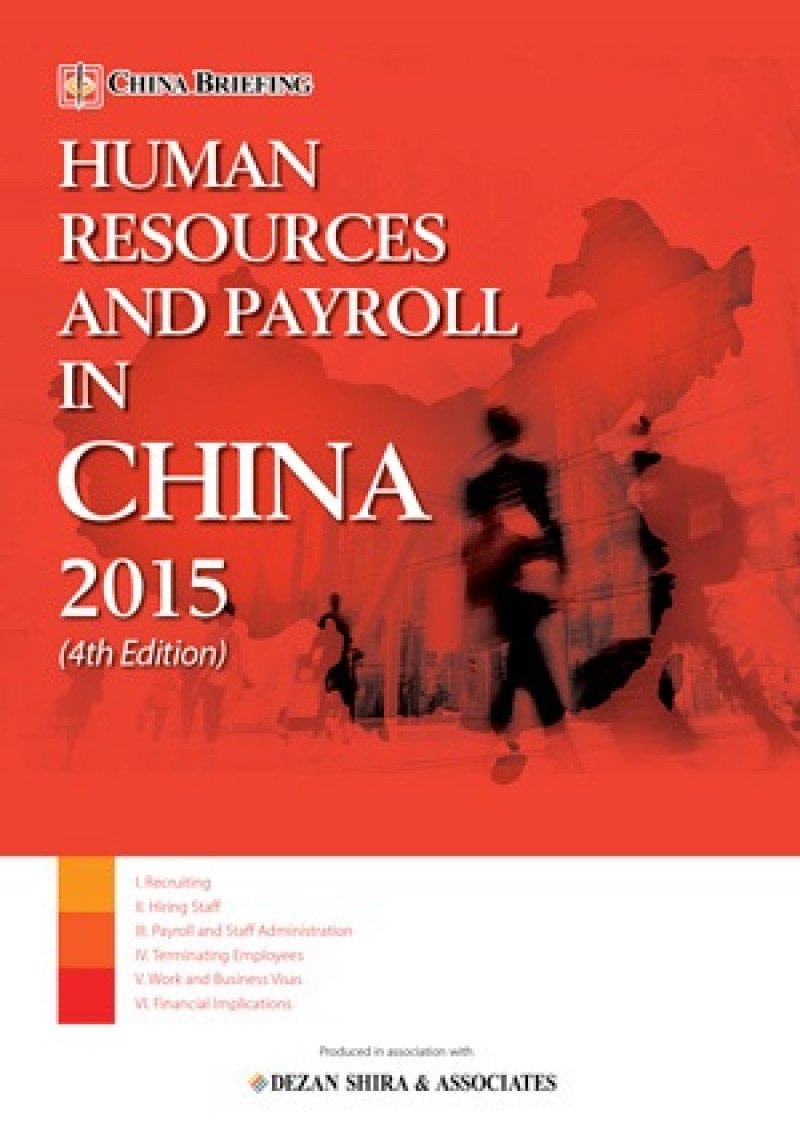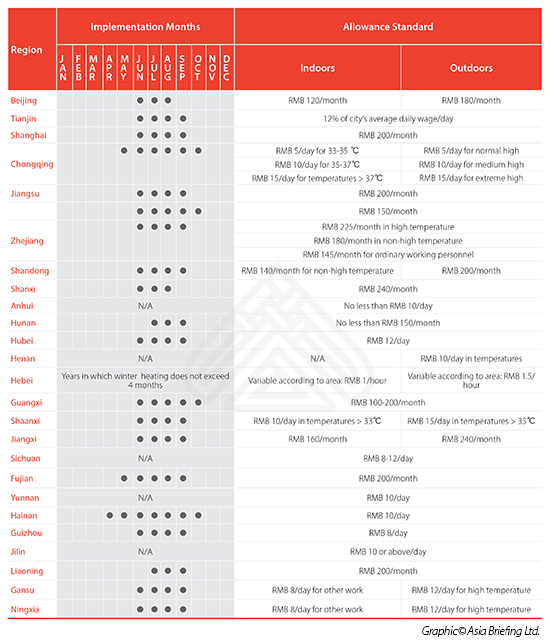Turning up the Heat: Understanding China’s Regional High Temperature Allowance
As summer approaches, a notice detailing temperature standards in Shanghai workplaces and the proper payment of the high temperature allowance has been released. Effective from June 1, 2016, the notice stipulates that between the months of June and September, Shanghai companies with outdoor labor must take effective measures to maintain a workplace temperature of below 33℃. Employers who fail to keep suitable temperatures are legally obliged to pay a monthly high temperature allowance of RMB 200 to employees, which must be included in the sum of the total salary. In addition, while paying the allowance, companies are still required to provide employees with cool beverages.
28 regions of China have implemented measures for the summer high temperature allowance, with only the more temperate provinces of Heilongjiang, Tibet and Qinghai not providing the allowance. Each region’s stipulations are different, with some calculating allowances per day and some per month. However, many laborers complain that they do not receive the allowance, despite the hot weather, which last summer reached temperatures as hot as 40C in some areas. Many companies are too concerned about costs, making them reluctant to pay out allowances, and in some cases exploit loopholes in order to avoid paying.
![]() RELATED: Payroll and Human Resource Services
RELATED: Payroll and Human Resource Services
Employees have the right to file a complaint if an employer fails to pay, but rarely do in fear of repercussions. In many cases, employees aren’t even aware of the allowance.
The following table details the most up to date standards of allowances and relevant summer months for each participating region. Standards are set for a general benchmark of 33℃ indoors and 35℃ outdoors, unless otherwise stated.
|
Asia Briefing Ltd. is a subsidiary of Dezan Shira & Associates. Dezan Shira is a specialist foreign direct investment practice, providing corporate establishment, business advisory, tax advisory and compliance, accounting, payroll, due diligence and financial review services to multinationals investing in China, Hong Kong, India, Vietnam, Singapore and the rest of ASEAN. For further information, please email china@dezshira.com or visit www.dezshira.com. Stay up to date with the latest business and investment trends in Asia by subscribing to our complimentary update service featuring news, commentary and regulatory insight. |

 Human Resources and Payroll in China 2015
Human Resources and Payroll in China 2015
This edition of Human Resources and Payroll in China, updated for 2015, provides a firm understanding of China’s laws and regulations related to human resources and payroll management – essential information for foreign investors looking to establish or already running a foreign-invested entity in China, local managers, and HR professionals needing to explain complex points of China’s labor policies.
 Labor Dispute Management in China
Labor Dispute Management in China
In this issue of China Briefing, we discuss how best to manage HR disputes in China. We begin by highlighting how China’s labor arbitration process – and its legal system in general – widely differs from the West, and then detail the labor disputes that foreign entities are likely to encounter when restructuring their China business. We conclude with a special feature from Business Advisory Manager Allan Xu, who explains the risks and procedures for terminating senior management in China.
 Employing Foreign Nationals in China
Employing Foreign Nationals in China
In this issue of China Briefing, we have set out to produce a guide to employing foreign nationals in China, from the initial step of applying for work visas, to more advanced subjects such as determining IIT liability and optimizing employee income packages for tax efficiency. Lastly, recognizing that few foreigners immigrate to China on a permanent basis, we provide an overview of methods for remitting RMB abroad.
- Previous Article Einhalten der rechtlichen Bestimmungen in China
- Next Article China’s New NGO Law and its Impact on FDI into the Higher Education Industry
























